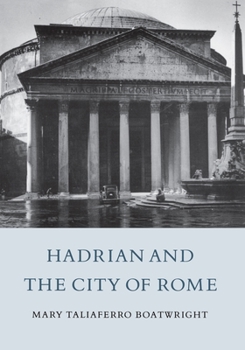Hadrian and the City of Rome
Select Format
Select Condition 
Book Overview
How Hadrian left an enduring mark on the architecture and urban topography of ancient Rome
Format:Paperback
Language:English
ISBN:0691002185
ISBN13:9780691002187
Release Date:July 1989
Publisher:Princeton University Press
Length:336 Pages
Weight:1.60 lbs.
Dimensions:0.9" x 7.4" x 9.9"
Customer Reviews
1 rating
Hadrian used architecture to meet needs of and shape Rome.
Published by Thriftbooks.com User , 26 years ago
Boatwright has made the understanding of architectural remains of Rome more meaningful. She has made the character, intent and intellect of Hadrian take on a purpose. Not only did Hadrian change the face of Rome, but by his efforts Rome became more representative of the multi-cultural world she ruled. The changes in the Campus Martius, Forum Romanum, Forum of Trajan and the Palatine were an attempt apparently to signify that Rome or rather the Roman world was a possession not of the Princeps but of its citizens. In addition architecture was used to promote intellectual curiosity and wonder. He placed the engineering and artistic skills in the hands of those who used them to create useful and meaningful structures and yet also a visual experience for the benefit of all citizens. No expense was spared yet efficiency was always employed. This book makes the reader realize how relevant Roman architecture is to us today.





